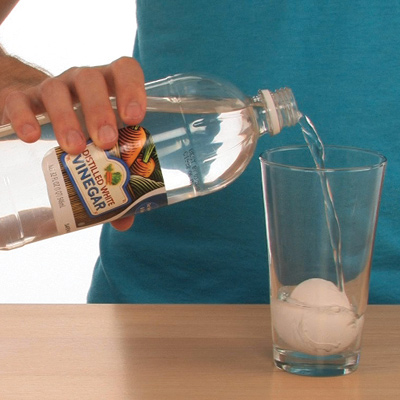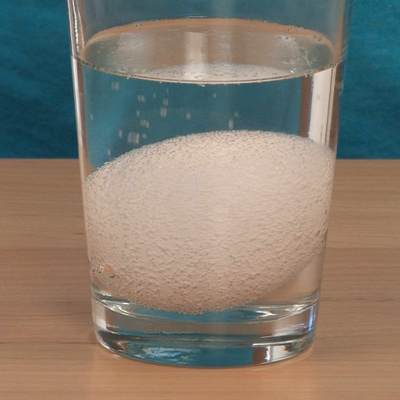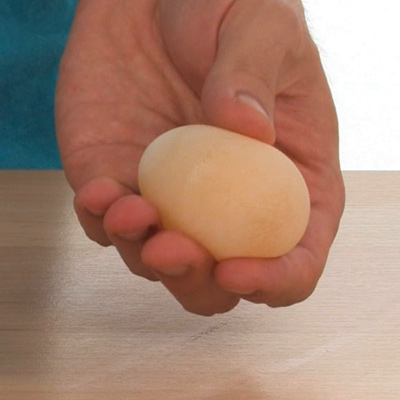Eggceptional Eggs-periments – Rubber, Bouncy, Naked Eggs
For the next two weeks, we are celebrating the incredible edible scientific egg with experiments that you can do using an egg. Or several.
We start with making Naked Eggs.

Did you know you can dissolve an eggshell and make a rubber egg that bounces? All you need is a little kitchen science know-how and some patience and you can do it.
Materials
- Raw egg
- Graduated cylinder or tall glass
- Vinegar
- Patience
Experiment
- Place the egg in a graduated cylinder or tall glass and cover the egg with vinegar.
- Look closely at the egg. Do you see any bubbles forming on the shell? Leave the egg in the vinegar for a full 24 hours.
- Change the vinegar on the second day. Carefully pour the old vinegar down the drain and cover the egg with fresh vinegar. Place the glass with the vinegar and egg in a safe place for a week – that’s right, 7 days! Don’t disturb the egg but pay close attention to the bubbles forming on the surface of the shell (or what’s left of it).
- One week later, pour off the vinegar and carefully rinse the egg with water. The egg looks translucent because the outside shell is gone! The only thing that remains is the delicate membrane of the egg. You’ve successfully made an egg without a shell. Okay, you didn’t really make the egg – the chicken made the egg – you just stripped away the chemical that gives the egg its strength.
You can also turn your Naked Egg into a Foldable Egg. Visit the Folding Egg experiment for complete instructions and the science behind it.
For more information, including the science behind how and why this works and a science fair project, visit the Naked Egg experiment page on SteveSpanglerScience.com.






Trackbacks & Pingbacks
[…] You will need two glasses, two eggs, a bowl, some water and some vinegar. Put one whole egg into a glass of vinegar and one into a glass of water. Note that both of your eggs look exactly the same. Leave your eggs in the glasses for a few hours and then check them. What you will see is that the egg in the vinegar is covered in bubbles. Almost like a fizzy drink. via […]
Leave a Reply
Want to join the discussion?Feel free to contribute!